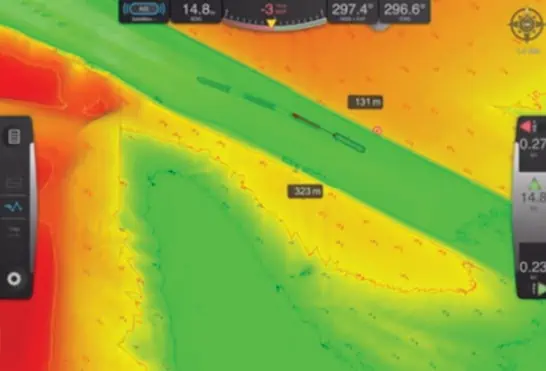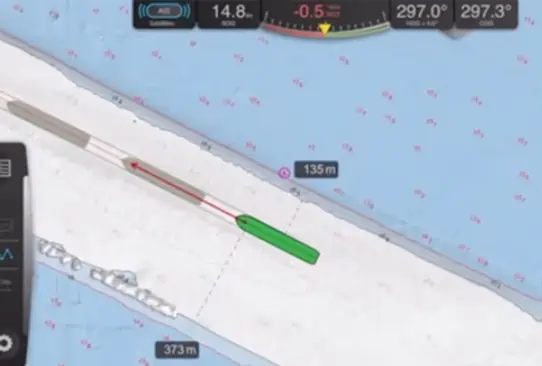Teledyne Geospatial has released the following article highlighting the work the company has performed in conjunction with Trelleborg Marine in using data based on the IHO’s (International Hydrographic Organization) S-102 Bathymetric Surface specification to create new situational awareness solutions for manned and unmanned marine vessels.
Teledyne Geospatial has been at the forefront of industry participation in defining and implementing S-100 standards, offering technical expertise and guidance to the international teams charged with the creation of these revolutionary future product specifications.
S-102, when used in conjunction with ENCs (electronic navigational chart) and other S-100 products such as surface currents, represents a vast digital leap for safe navigation and deeper levels of situational awareness on our oceans.

Figure 2: S-102 enabled data
Teledyne Geospatial and Trelleborg Marine have supported S-102 v2.1, enabling sea trials with pilots from multiple ports using the new datasets in day-to-day activities. The trial has been a huge success, and pilots have expressed a number of positive sentiments:
“Safety is increased as mariners get a highly detailed view of the seabed to help them make informed decisions about where to go— and where not to.”
“S-102 data makes it possible to get accurate real-time distances from own vessel to safety and shallow contours, adjustable in 10 cm steps, either manually or automatically based on draught, tide, and desired under keel clearance.”
“Vessel traffic can be maximized as it is possible to get very close to the limit regarding under keel clearance and still be safe. No longer necessary to wait for the perfect tide to feel confident.”
“Dredging to maintain a certain depth in channels and other areas has negative environmental impacts and is very expensive. With S-102, less dredging is required as mariners can see exactly where the dredged areas are and stay within their boundary.”
The S-102 datasets used in these trials will soon be applied to Maritime Autonomous Surface Ships (MASS).











